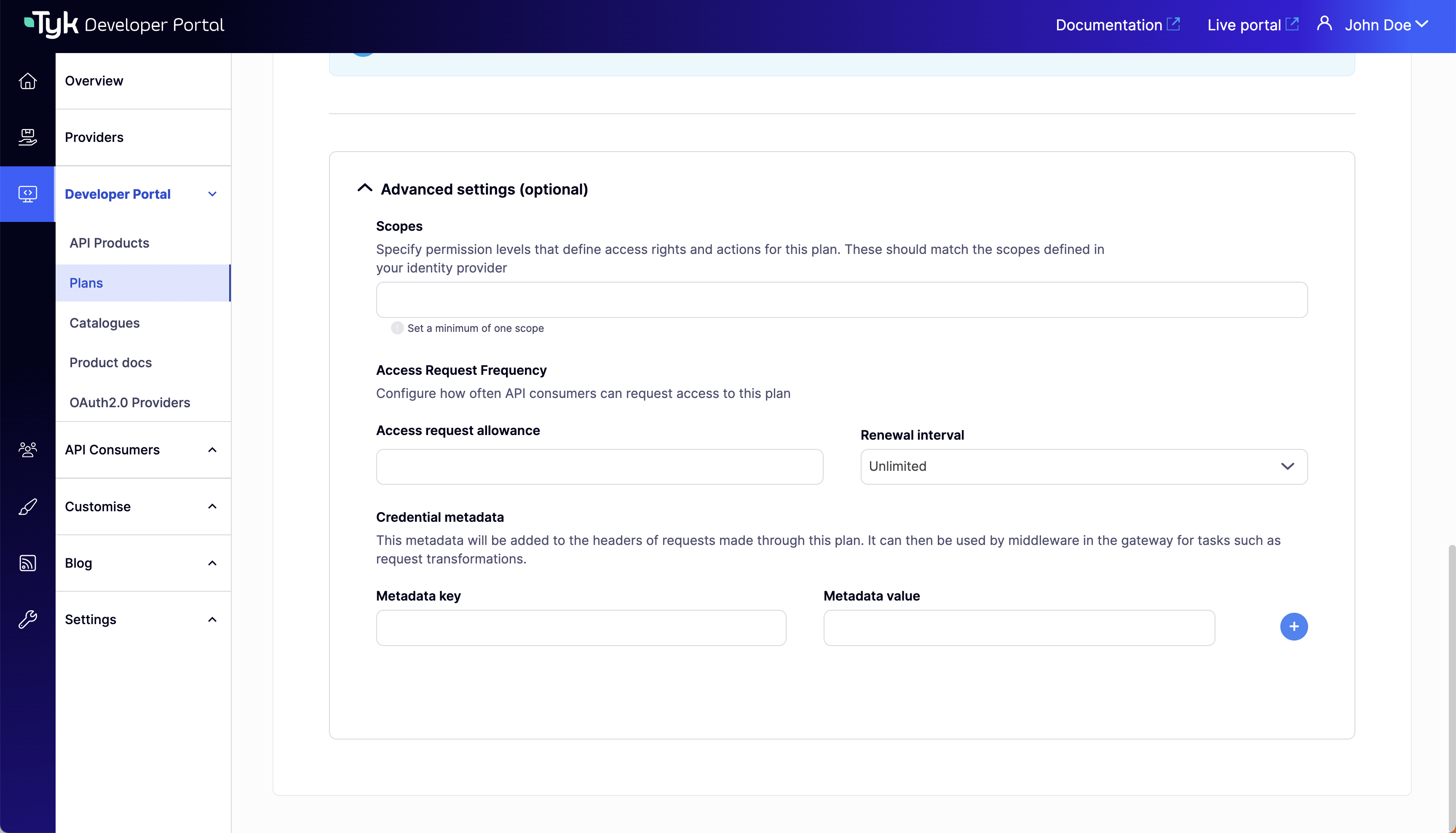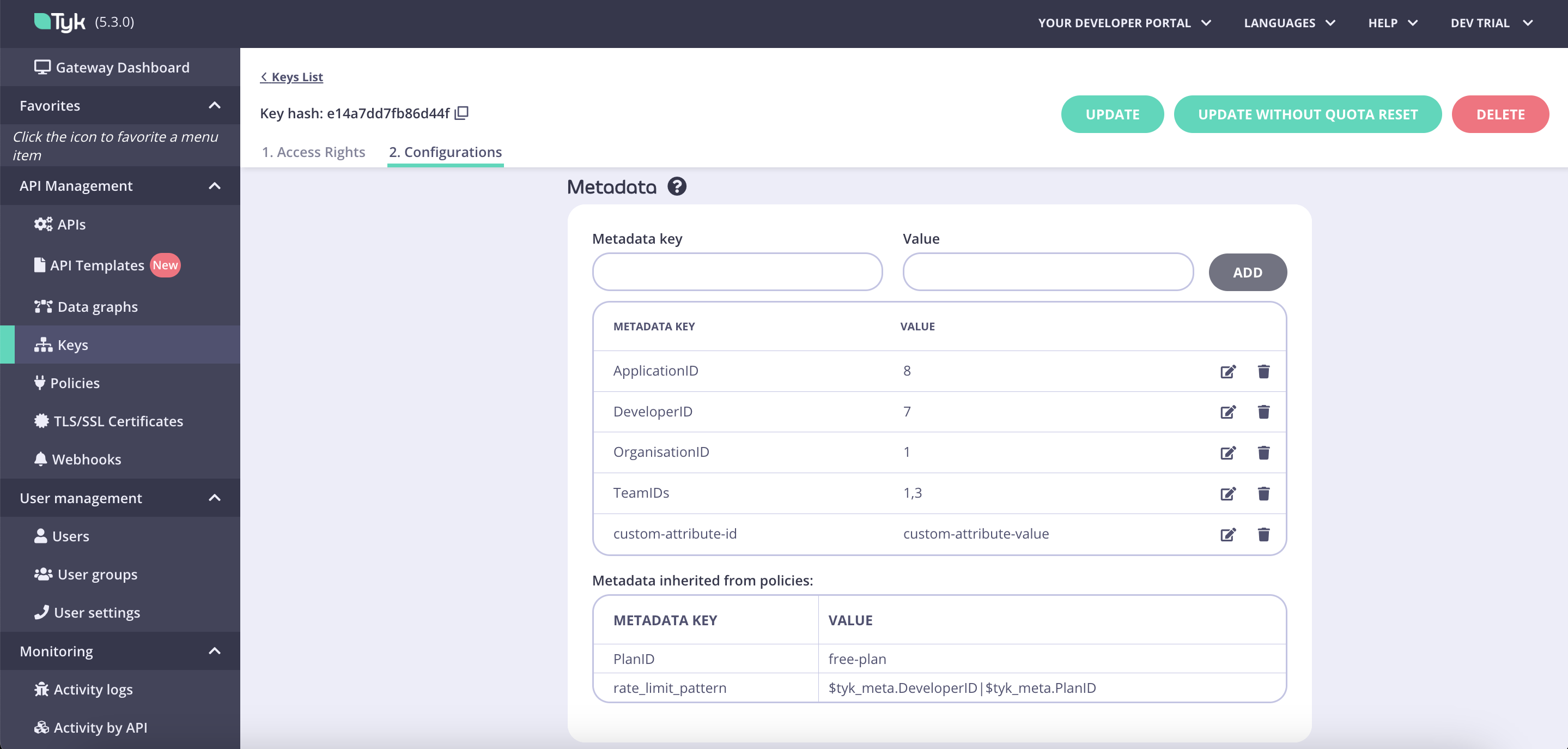Introduction
The Tyk Enterprise Developer Portal supports custom rate limiting patterns that allow you to apply rate limits based on entities other than just credentials, such as per application, per developer, or per organization. This is particularly useful for B2B scenarios where API quotas need to be shared across multiple developers and applications within an organization. For detailed information about custom rate limiting concepts and configuration, see the Custom Rate Limiting section in the main Rate Limiting documentation. Prerequisites This capability works with Tyk 5.3.0 or higher.Configuring Custom Rate Limit Keys in the Portal
If you are using Tyk Developer Portal version 1.13.0 or later, you can configure the custom rate limit keys directly from the Developer Portal in the Advanced settings (optional) collapsible section of the Plan’s view (by Credentials metadata).

Using Custom Rate Limit Keys with the Portal
The Tyk Enterprise Developer Portal facilitates the configuration of various rate limiting options based on a business model for API Products published in the portal. To achieve this, the portal, by default, populates the following attributes in the credential metadata, which can be used as part of a custom rate limit key:- ApplicationID: The ID of the application to which the credential belongs.
- DeveloperID: The ID of the developer who created the credential.
- OrganisationID: The ID of the organization to which the developer belongs.

Tyk Enterprise Developer PortalIf you are interested in getting access contact us at [email protected]